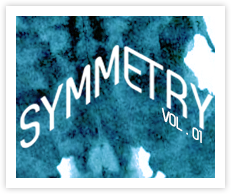

Say yes to two-way symmetrical communication
Alison DeLory // March 15, 2013

If an organization blasts out a message and no one is around to hear it, does it make a sound?
Without listeners, there is no communication. And communication is most effective when the messages are moving back and forth between an organization and its publics, with both parties reacting and responding in meaningful ways. This can be achieved with two-way symmetrical public relations—the best model available for professional practice today.
Instead of merely pushing messages out to its various publics, an organization engaged in two-way symmetrical communication:
- listens to conversations and the questions stakeholders are asking,
- considers their concerns, and
- attempts to understand and satisfy their needs and preferences.
By doing so, an organization can best position its brand among end-users.
Grunig’s four practice models
The two-way symmetrical model is one of four models of public relations that theorist Dr. James Grunig recognized and named in 1984. At the opposite end of the spectrum is the press agentry/publicity model, which uses persuasion and manipulation to attempt to influence an audience to behave as the organization desires. Press agentry/publicity is paternalistic in the same way a parent might say to a young child, “Eat your peas or you won’t get any dessert.”
Then you have the public information and two-way asymmetrical models, which today may rely on tools such as press releases or social media platforms used asymmetrically to distribute organizational information. Organizations send a message out, and in the public information model, expend little energy understanding how it is received, or even if it was received. In the two-way asymmetrical model message distribution is more targeted and scientific, but still the emphasis is on getting a targeted and desired reaction.
Finally you have the two-way symmetrical model, which involves an organization negotiating with publics, resolving conflicts, and promoting mutual understanding and respect through free-flowing information.
Easy peasy, right? Yes and no.
The challenges of symmetry
With the tools available to public relations practitioners today—especially social media platforms—connecting with stakeholders is possible in new, exciting, and evolving ways. But listening, reacting and responding takes skill, commitment and time, and must become a learned habit and standard of practice. It’s not enough to merely have a Facebook page and Twitter account, organizations must use them interactively and symbiotically.
Some will criticize the model as idealistic and impractical, and undoubtedly it does need attention and a commitment of resources. Sometimes stakeholders’ needs conflict. It’s also not a practical model for every organization, e.g., policing and some government departments may not necessarily be open to receiving and involving input from publics. But for many organizations, two-way symmetrical public relations done in the public’s best interest is a goal worth striving toward.
It is difficult to assess how successfully an organization is engaging the model without a full assessment of its entire PR strategy and execution, but there are examples of tactics that at least appear to flow out of the model. One such example is Nova Scotia Power (NSP) and its “Tomorrow’s Power” campaign. NSP answers customer questions on its web site and in information campaigns. Most are practical and serious, but the campaign has allowed NSP to show its playful side, too. It even took a question from Tyler of Halifax: “If zombies took over earth how long could you guys keep supplying power to survivors? Would windmills just keep turning?” You might even say that this model is so inclusive it even involves the undead!
But seriously, in the land of the still-living, two-way symmetrical public relations may be lofty, but it’s not unattainable. It is also more ethical than any other model we currently have available. As Cutlip, Center, & Broom (2000, p. 4) state, it “emphasizes communication exchange, reciprocity, and mutual understanding,” thereby allowing an organization and its publics to adjust and adapt to each other until consensus is reached.[3]
To be managed effectively, it requires that trained public relations professionals be in management positions where they can strategize and advocate for proper implementation of tactics. If this is achieved, two-way symmetrical communication that focuses on mutual respect and understanding, emphasizes negotiation and a willingness to adapt and compromise, and engages with, and accommodates publics, is indeed ideal—and achievable.
References
1. Grunig, J.E. (1989). Symmetrical presuppositions as a framework for public relations theory. In C. Botan & V. Hazleton (Eds.), Public Relations Theory (pp.17-44). Hillsdale, NJ: Lawrence Erlbaum Associates, Inc.
2. Fitzpatrick, K. & Gauthier, C. (2001). Toward a professional responsibility theory of public relations ethics. Journal of Mass Media Ethics, 16(2/3), 193-212.
3. Cutlip, S.M., Center, A.H., & Broom, G.M. (2000) Effective Public Relations (8th ed.). Englewood Cliffs, NJ: Prentice Hall.

Pingback: Symmetry » The two-way symmetrical communication debate()
Pingback: PResto » Blog Archive » PR 2.0 & Campaign()
Pingback: Has social media apprehended PR? | According to Feeny()
Pingback: PResto » Blog Archive » The Success Factor: What it takes to make an impression in social media()